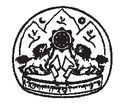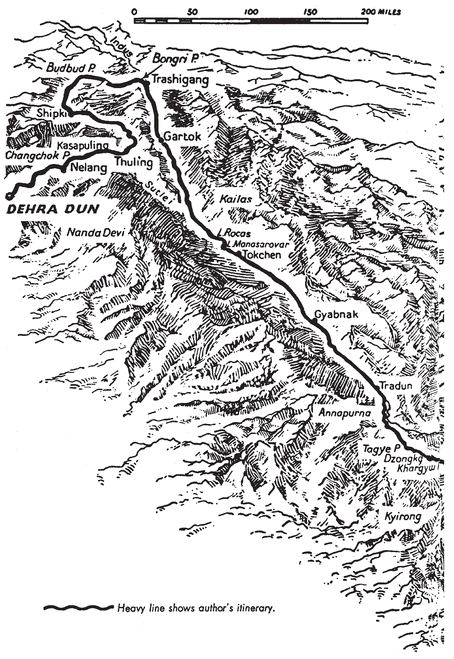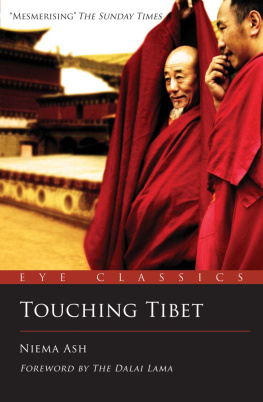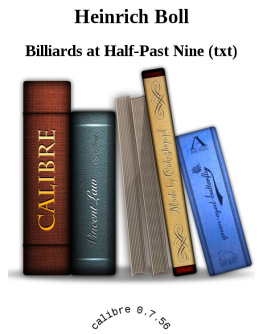Table of Contents
THE TARCHER CORNERSTONE EDITIONS
Tao Te Ching
by Lao Tzu, translated by Jonathan Star
The Essential Marcus Aurelius
newly translated and introduced
by Jacob Needleman and John P. Piazza
Accept This Gift: Selections from A Course in Miracles
edited by Frances Vaughan, Ph.D., and Roger Walsh, M.D., Ph.D.
foreword by Marianne Williamson
The Kybalion
by Three Initiates
The Spiritual Emerson
Essential Works by Ralph Waldo Emerson
introduction by Jacob Needleman
The Four Gospels
The Contemporary English Version
foreword by Phyllis Tickle
The Hermetica: The Lost Wisdom of the Pharaohs
by Timothy Freke and Peter Gandy
Rumi: In the Arms of the Beloved
translations by Jonathan Star
The Aquarian Gospel of Jesus the Christ
by Levi Dowling
The Aquarian Conspiracy:
Personal and Social Transformation in Our Time
by Marilyn Ferguson
Seven Years in Tibet
by Heinrich Harrer
The New Religions
by Jacob Needleman
JEREMY P. TA RCHER/ PENGUIN
a member of Penguin Group (USA) Inc.
New York
THE DALAI LAMA
TMEKCHEN CHOELINS
MCLEOD GANJ 176219
KANGRA DISTRICT
HIMACHAL PRADESH
F O R E W O R D
Prof. Heinrich Harrer is one of those in the West who knows Tibet intimately. His book came at a time when there were much misconceptions about the life and culture of Tibet - and most of the books available then certainly did not help to clear away these wrong impressions.
Having been forced to come to Tibet under unfortunate circumstances, he chose to live among our people and share their simple way of life, thus he made many friends and is regarded with much affection.
I am happy that his book Seven Years in Tibet which gives a true and vivid picture of Tibet before 1959 is being reprinted when there is a renewed interest on Tibet.
January 29, 1982
Introduction
For the British, and, indeed, I think for most Europeans, Tibet has during the last fifty years held a growing and a particular fascination. In 1904, Younghusband, in a campaign scarcely matched in the annals of war either for its administrative difficulties or for the combination of audacity and humanity with which it was conducted, marched to Lhasa and subdued Tibet. The Tibetans, whose persistent intransigence upon an imperial frontier had at length provoked our incursion, were granted the most chivalrous of terms, and on the remote, mysterious plateausilhouetted for a time in sharp, painstaking relief by the dispatches that trickled back over the passes from the handful of correspondents with Younghusbands expeditiona veil once more descended.
It was a thick veil, and it did not get much thinner as the years went by. The end of the nineteenth century found Europes eyes turning toward Asia. The geographical challenge of Africa had been, in its essentials, met, and on that continent the political problems, save in South Africa, appeared in those days to be soluble only in the chanceries of European capitals. In Asia, by contrast, imponderable and exotic forces were on the move. Russias conquests in Central Asia had fulfilled what was believed to be only the first phase of her territorial ambitions; in the minds of Lord Curzon and of Kipling, her attempts to probe with reconnaissance parties the mountain barrier that separated her armies from India produced apprehensions that the event proved to be disproportionate.
But here again Asia came into the picture, for while Young-husbandbringing artillery into action, for the first and so far the last time in history, at 17,000 feet above sea levelwas defeating the Tibetans, the Japanese, with much less of apology in their manner, were defeating the Russians in Manchuria. And only three years earlier, in the Boxer Rebellion, an international expedition had raised the siege of the Legation Quarter in Peking.
Tibet did no more then than she had before, or has since, to gratify Europes curiosities about Asia. She continued, increasingly, to stimulate them; the extent to which she reciprocated them was inimical. Once four Tibetan boys (in the pages that follow, you will meet briefly the only survivor of a sensible experiment that the Tibetans never got around to repeating) were sent to be educated at Rugby; and until the Chinese Communist forces took the country over, in 1950, the sons of noblemen quite often went to school in India, learning (among other things) the English language. Europe would have welcomed Tibetans gladly, as she has welcomed travelers and students from every other Asiatic country, but whereasbroadly speakingEurope wants like anything to go to Tibet, Tibet has never evinced the slightest desire to go to Europe.
She has, moreover, made it as difficult as possible for Europeans, or indeed for any non-Tibetans, to set foot on Tibetan territory, however impeccable their credentials. The veil of secrecy, or perhaps rather of exclusiveness, which was lifted by Young-husband and then so tantalizingly dropped again, has in the last fifty years been effectively penetrated by very few, and of these it is safe to say that not one attained to the remarkable position that the author of this book, toward the end of his five years residence in Lhasa, found himself occupying in the entourage of the young Dalai Lama.
The European traveler is accustomed to seeing Asia, or anyhow the backwoods of Asia, from above. By that I mean that, although at times his situation may be precarious and his resources slender, the European is generally a good deal better off than the primitive people through whose territory he is passing. He possesses things that they do notmoney and firearms, soap and medicines, tents and can openers; he has, moreover, in another part of the planet a government that, should he get into trouble, will try to get him out of it. So the foreigner tends to ride upon the high though not very reliable horse of privilege, and to view the backwoods and their denizens from above.
It was otherwise with Herr Harrer. When, in 1943, he made a third and successful attempt to escape from an internment camp at Dehra Dun and headed for Tibet, he was seeing Asia from below. He traveled on foot, carried his few possessions on his back, and slept on the ground in the open. He was a fugitive, with no status, no papers, and very limited funds. For a well-found expedition to follow his circuitous winter route across the Changthang plateau and down to Lhasa would have been a creditable feat; as performed by Harrer and his companion, Aufschnaiter, the journey was an astonishing tour de force. When they reached Lhasa, they were penniless and in rags.
















